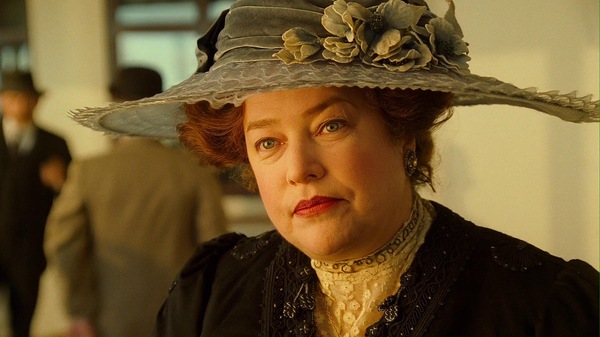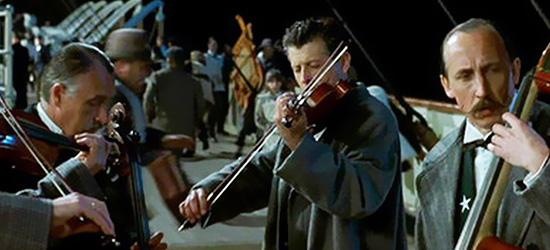November to Remember: How historically accurate is Leonardo DiCaprio and Kate Winslet's film Titanic
The 1997 film based on the sinking of the RMS Titanic is available to watch on Netflix. A 3D version of the film was also released in 2012 to commemorate the 100 years of the tragedy

Last Updated: 07.14 PM, Nov 03, 2021
Even after over a hundred years since the devastating cold night in 1912, the tragic event of the RMS Titanic sinking in the Atlantic cannot be forgotten. Thanks to the film adaptation Titanic by James Cameron, the vast sea engulfing thousands of humans lives on in the memory of people. Like the tragic event, the film too has created an indelible mark in our hearts with its remarkable portrayal of the ill-fated maiden voyage.
The 1997 epic romance and disaster film, starring Leonardo DiCaprio and Kate Winslet, went on to not only become a huge and critical and commercially successful film but also won 11 Academy Awards, becoming one of the films with maximum Oscars. Made with the highest production budget of that time ($200 million), it collected more than $2 billion worldwide. The film is known for its CGI and offers one epic love story of Jack and Rose, which has been etched in our hearts. It is known that Jack and Rose are fictional characters and that their love story was created for an emotional impact of the disaster, which it rightfully did. But the film does portray many other true events accurately. Let's look at the true stories that inspired the film.
Don Lynch, the historian for the Titanic Historical Society also worked as a history expert on the movie. He advised the actors on the accents, behaviours and personalities of the people of the early 20th century.
Real-life characters
One of the real-life characters in the movie is Margaret Brown, now popularly known as 'The Unsinkable Molly Brown' after she survived the tragic incident. Molly was the nickname created by Hollywood later in the 1930s. It is said to be the part of a fictional tale that laid the basis for a Broadway show 'The Unsinkable Molly Brown'. Margaret Brown was played by Kathy Bates in the film.
Paul Burns, vice president and curator for the Titanic Museum Attractions in Missouri and Tennessee, told History, a factual entertainment portal, that there are true accounts saying that Brown had coordinated with other first-class passengers to help the lower-class survivors after Carpathia rescued the survivors on the ship. After the horrific incident, she formed a survivor’s committee and helped with funeral arrangements of bodies that rescuers had recovered.
The film shows Thomas Andrews, the Chief Designer for the Titanic played by Victor Garber, in the First Class smoking room staring at a painting of the Titanic. According to many accounts, it is exactly how he died on the ship.
There is also a scene in the film where an elderly couple hold each other's hands on their beds and cries as they near their death. Their characters, as per Cinemablend, are based on a real-life couple, Isidor Straus and Ida Straus. Their room was their final resting place.

Live music while the ship was sinking
Another real-life character and event was the band who were playing music as the ship sank. They knew they had to keep people calm. The violinist Wallace Hartley was portrayed by the actor Jonathan Evans-Jones in the movie. He is considered one of the heroes on that unfortunate ship as he continued playing music to keep people calm. Lynch told the portal that they made no effort to save themselves. All the band members died that night. One of the songs they played is “Nearer, My God, to Thee”, he said as “many people claimed to have heard it.” The band in the movie played the American version of the song.
The violin played by Hartley at the final moments of his and over a thousand passengers' lives was recovered along with his body. The music instrument is displayed at a conservation studio in Lurgan, Northern Ireland. The instrument has an engraving that reads a message from the musician's fiance. It supposedly reads: 'For Wallace, on the occasion of our engagement. From Maria.'
Some of the other real-life depictions are Charles Joughin, a chief baker on the ship and Colonel Archibald Gracie IV who added humour during the final moments saying, "back to our brandy, eh?" He was sucked into the water when the first part of the ship broke but survived as he boarded on lifeboat B. He penned the details of the night in his book The Truth About the Titanic before he died of hypothermia later that year. Another real-life character accurately portrayed in the film is the American businessman Benjamin Guggenheim. He refuses to wear the lifejacket, saying he is ready to go down with the ship like gentlemen. The film also has a line of him where he says, "But we would like a brandy". But Lynch said that the line was added by Cameron.

Quick and right decision by Captain Edward John Smith helped with some more time for the ship
Captain Edward John Smith who led the crew on the Titanic drowned with the ship in real life as shown in the movie. According to Paul Burns, his quick decision to seal the watertight doors as portrayed in the movie helped 'prevent the ship from sinking like it normally would'. The ship otherwise would have sunk towards the side where it hit the iceberg and then rolled over, writes the portal adding that it would have gone down quicker. However, the final scenes of Captain Edward John Smith are not accurately portrayed in the film as per historian Tim Maltin who has penned several books and worked on documentaries about the tragic night of April 1912. Calling the captain a hero, Maltin has reportedly said that the captain was offered help but he refused to get on the lifeboat and swam around in the dark cold water to help passengers.
The film is applauded for realistically recreating and portraying the horror of that night with very few details actually available. Lynch had said that his film is so realistic in some aspects that many people believe the events shown in the film are facts.
Most Frequently asked questions?
No. The last survivor Millvina Dean, who was just two months old at that time, died in 2009 at the age of 97.
The ship sank on April 15, 1912, perishing the lives of over 1000 people.
Jack and Rose are fictional characters in the film Titanic

Thanks for your time & feedback, We intend to make the most it in our improvement journey

